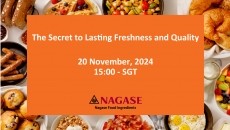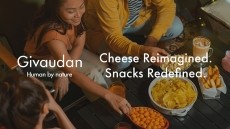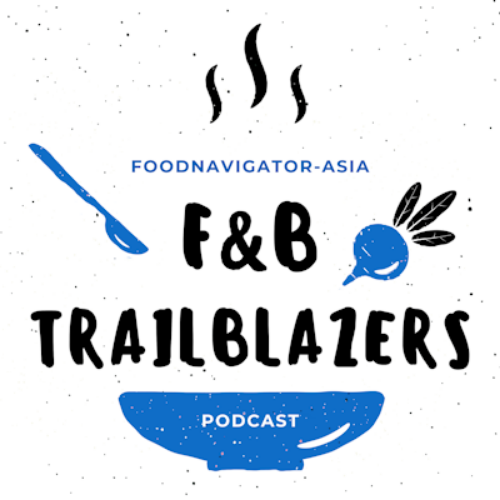Major brands’ 2021 focus: Yili, Mars Wrigley and Heineken on their 2021 markets to watch

1) Yili: Conquering the South East Asian dairy market
China’s Yili has been adamant about South East Asia being a top expansion priority for the firm, evidenced by not only a large volume and variety of Yili brands and products entering the market but also its M&A activities and building of physical facilities in the region.
This push in ASEAN is expected to grow in 2021 as Yili builds its dairy factory in Indonesia to manufacture products locally, which would likely bring down costs in terms of logistics and tariffs.
“In recent years, the South East Asia economy has developed rapidly and is becoming the most important emerging market in the world. With the improvement of health awareness and the change of consumption habits, consumption of dairy products in Southeast Asia is increasing year by year, [which is why the region is a key market for Yili],” Yili Innovation Centre Vice General Manager Dr Yun Zhanyou told FoodNavigator-Asia.
“Yili plans to continue investing in South East Asian market and continue expanding cooperations with South East Asian countries. In 2018, we acquired Chomthana which is the largest local ice cream company in Thailand, and we have since seen Chonthana’s production efficiency increase by over 30% and over 870 local jobs created.”
Chomthana received the FDA Quality Award awarded by the Food and Drug Administration of the Ministry of Public Health of Thailand in 2020.
“Yili is also building a dairy factory in Indonesia, as we want to create a dual centre in South East Asia [and will be able to manufacture more products with this factory],” said Dr Yun.
“At present, Yili products such as Ambrosial yogurt, Joyday ice cream, Cremo ice cream and many more have already been launched in many South East Asian countries such as Singapore, Thailand, Indonesia, Malaysia etc.”
Moving forward, Yili will base its future product innovation and introduction for the region on local consumer demand, and observe what the local needs are.
“Based on the needs of local consumers in South East Asia, Yili will continue to introduce innovative products and also strengthen business cooperations with supply-chain partners to make greater contributions to local economic development,” said Dr Yun.
“The pursuit of health is one of the most important consumer trends in the future, and is the core driving force for the rapid growth of consumer demand for dairy products. It is foreseeable that there is still huge room for growth for the dairy industry in 2021 and beyond.”
Yili was named the World's Most Valuable Dairy Brand by international brand value evaluation agency Brand Finance in 2020.
2) Mars Wrigley – Paving the way for healthier options in emerging markets
Global confectionery giant Mars Wrigley has established a specific business unit targeted at developing markets which it has dubbed the Global Emerging Markets (GEM) cluster – this covers over 150 countries across Asia (except China), all of the Middle East, Africa and Latin America.
According to GEM President Blas Maquivar, the main commonalities between all of these markets include a growing young population, clear prognosis of GDP growth, and low penetration of the food categories in which Mars Wrigley competes such as chocolate.
“Our priority is to increase the penetration of these categories, chocolate or gum or others, in these GEM markets so as to generate growth,” Maquivar told FoodNavigator-Asia.
“In addition to growing current categories, we also want to plant the seeds for future categories which are mostly relatively small today but we expect to be mature in 10 to 15 years, so essentially migrating the portfolio towards more premium categories such as healthier products.
“One example here is under the KIND brand, which specializes in healthier products and snacks – this category is currently smaller than biscuits, cookies, chocolates and the like, but in 10 years we believe it will be very relevant.
“So we will progress with this plan intentionally, by partnering with and acquiring relevant players and continuing to grow in this space – We see healthier eating as one of the main trends that will be very important in emerging markets moving forward, similar to in the developed world.
“Brands such as KIND will be very important for us, and we’ve started launching in Asia to some good response – It’s already in some markets like Hong Kong, Taiwan, China and South Korea, we’re looking to ASEAN markets like Vietnam and Thailand, and also the rest of Asia by 2021 to 2022.”
Beyond chocolate, Maquivar also highlighted chewing gum as an area that is very relevant to the healthier eating theme.
“Many GEM consumers chew gum but don’t want sugar in their gum as it’s bad for the teeth – this is why we want to enter this space too as we have our sugar-free Orbit gum that fits this trend,” he said.
The firm’s short-term plans for its emerging markets will focus on post-COVID-19 recovery, thoroughly understanding new consumer trends, and also paving the way for healthier options to become mainstream.
“Our plans for the near future will be to first accelerate top line sales and recover from the impacts of COVID-19 which impacted us due to consumers being in lockdown, though we’re already seeing recovery in many countries as the brands are very strong,” said Maquivar.
“We are also going to be utilising our Present Forward, Future Back strategy to have our products distributed as widely as possible in GEM markets - Present Forward involves maximizing our presence in current traditional channels, the mom-and-pop stores; whereas Future Back involves prioritizing our digital presence such as via e-commerce, which COVID-19 has accelerated the need for.”
“So 2021 will first be about recovery so that we can grow and continue to grow – this will mean understanding the new post-COVID-19 consumers and new trends driving them, and working to become the best in class here to we can develop value products and the best strategies to appeal to these GEM consumers.”
3) HEINEKEN APAC: Low-to-non-alcoholic beer and cider growth in APAC
Low-to-no alcoholic beverages have already been a rising trend across the past year especially in the beer arena, with raft of big names getting in on the trend and launching non-alcoholic including Kirin, Asahi and Carlsberg.
One of the best-known non-alcoholic beers in the Asian market currently though is HEINEKEN’s Heineken 0.0. According to the firm, one of the main reasons for the rapid growth in this market is due to dual consumer trends of seeking out healthier, lighter options and also looking for more choices in their drinks.
“We have launched Heineken 0.0 in multiple markets across APAC, [in line] with the trend for consumers being more conscious of health and wellbeing [and also with] consumers wanting to experiment with more choices and diverging tastes,” HEINEKEN APAC Marketing Transformation Director Sarah Maddock told us previously.
“The Millennial and Gen Y generation of drinkers fall under the category of people who are more health conscious. They are also a generation that prefers lighter, easy to drink beers - Tiger Crystal in multiple countries and Heineken Silver in Vietnam were put on the market for that reason as they take away some of the bitterness that traditionally appeals to more mature beer drinkers.
Also in line with the idea of providing more choices for consumers is the company’s focus on developing its cider portfolio, including well-known names such as Strongbow and Apple Fox.
“[The] trends suggest that consumers are really looking beyond the traditional choices they have in drinks and seeking out new tastes, new flavours and new experiences which suggests the growth for this type of beverage (cider) is set to continue in the near future,” said Maddock.
“Within APAC where we have launched ciders all across the region from Papua New Guinea, to Indonesia and to New Zealand, [there] exist several different types of cider markets – [some are more mature than others].
“Some APAC markets like New Zealand and Australia [are more mature], where cider has existed for a long time and remains popular till this date [but] there are also many markets without a traditional cider culture.”
As such, the firm expects good growth in the cider category especially from these markets in the APAC region, where it intends to build strongly on existing brands.
“In countries like this, cider is seen as a new category in the last few years and we [expect] really exciting growth – Vietnam would be a great example where our Strongbow brand is really popular.
“The cider journey in APAC is really very much at the start – as you know we have already launched our Strongbow and Apple Fox brands in many markets and are continuing to grow and build those brands, whilst introducing innovation through different flavours and varieties.”


















